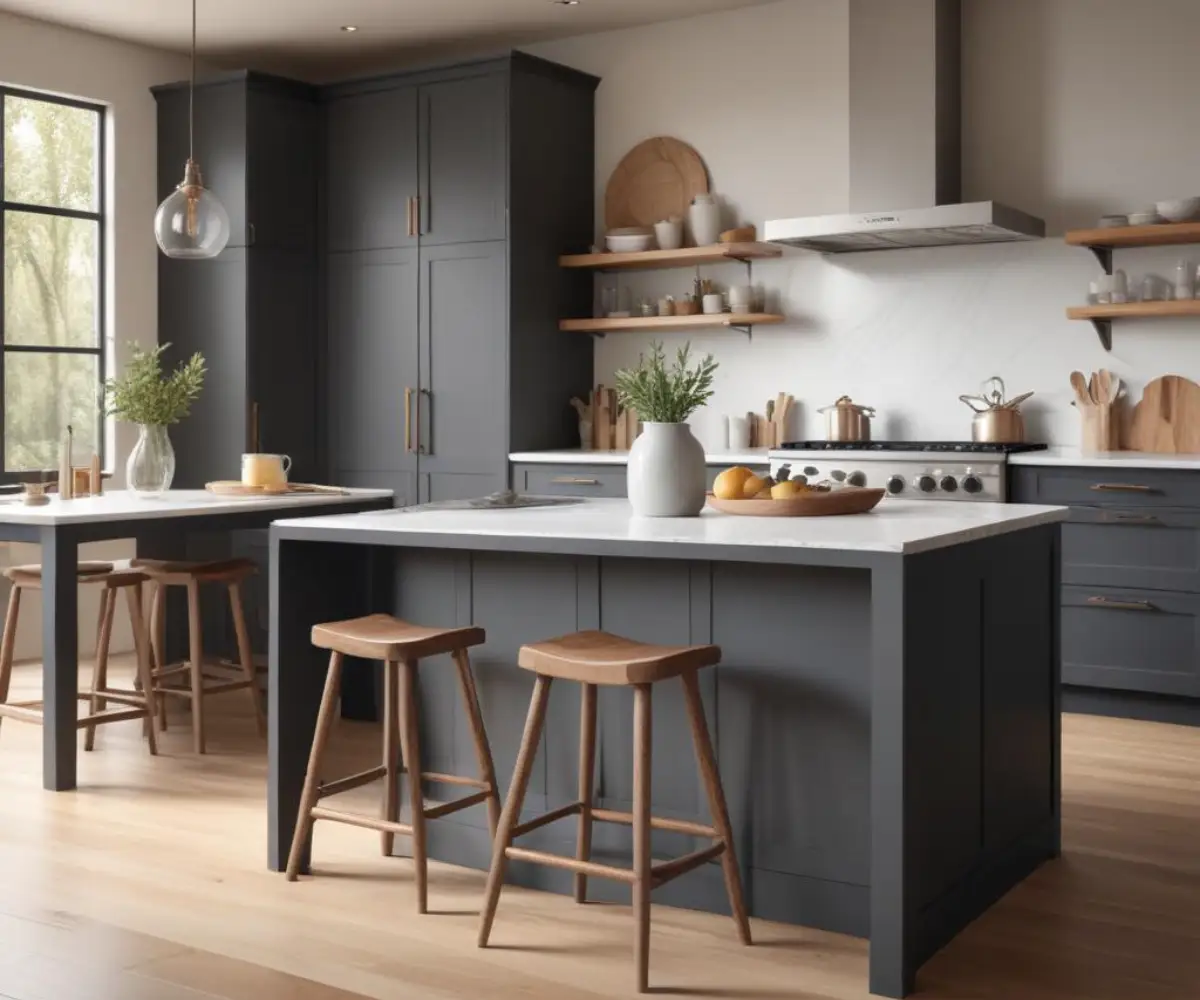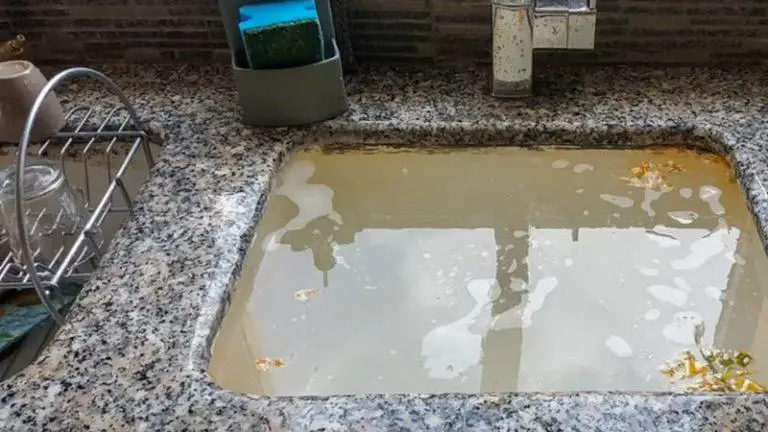Why Choose NorthPoint Cabinetry? A Look at the Pros and Cons
Choosing kitchen cabinets can feel like navigating a minefield. You’re balancing a tight budget against the desire for a beautiful, long-lasting kitchen. In this search, many homeowners encounter NorthPoint Cabinetry, a brand that promises quality features like all-plywood construction at an attractive price point.
The core problem is the sheer volume of conflicting information. Some sources praise NorthPoint for its value, while scattered forum posts hint at frustrating quality control issues. This leaves you wondering: are these cabinets a savvy investment or a future headache waiting to happen?
You'll Learn About
What Exactly is NorthPoint Cabinetry? The Brand Deconstructed
Before diving into the issues, it’s important to understand where NorthPoint sits in the market. NorthPoint is a brand under the umbrella of Hardware Resources, a well-known supplier in the cabinet industry. They are positioned as a “stock” or “ready-to-assemble” (RTA) cabinet line, though many dealers assemble them before delivery.
Their main selling proposition is offering features typically found in more expensive semi-custom lines. This includes all-plywood boxes, solid wood dovetail drawer boxes, and soft-close hardware as standard on their Premier collection. This combination of features at a lower price is what creates their appeal and also the central conflict in their reviews.
The Core Materials: A Plywood Advantage
One of NorthPoint’s most significant strengths is its use of all-plywood construction for the cabinet boxes. Unlike the particleboard or medium-density fiberboard (MDF) used in many entry-level cabinets, plywood offers superior structural integrity and better resistance to moisture damage. This means the “bones” of the cabinets are generally considered sturdy and reliable for their price class.
The shelves are also made from thick 3/4” veneered plywood, which helps prevent the sagging that can occur with thinner materials over time. This foundational quality is a consistent positive point mentioned by dealers and installers. It’s the starting point from which the rest of the product is built.
The Problem: Unpacking the Inconsistent Quality Control Reviews
The primary challenge for potential buyers lies with the finish and final assembly quality. While the core construction is solid, numerous user experiences point to inconsistencies that can turn a dream kitchen project into a frustrating ordeal. These issues are not universal, but they are common enough to warrant serious consideration.
Problems often revolve around the painted finishes, especially on popular Shaker-style doors. Homeowners report issues like uneven paint application, chipping, and cracks appearing at the joints of the five-piece doors. While some cracking is a natural result of wood expansion and contraction, the frequency of these complaints suggests a potential vulnerability in the finishing process.

Painted Finishes: The Achilles’ Heel?
Painted cabinets are in high demand, but they require a meticulous finishing process to be durable. Issues like paint pooling in corners, thin coverage on edges, and visible seams are recurring themes in negative reviews. Shaker doors, with their five-piece construction, are particularly susceptible to showing hairline cracks at the joints as humidity levels change.
To mitigate this, many manufacturers use MDF for the center panel of painted doors because it’s more stable than solid wood. NorthPoint also uses this construction method, but finish problems can still occur at the frame’s joints. Your number one defense against this is ordering a sample door and inspecting it rigorously before placing a full order.
Shipping Damage and Assembly Flaws
Another significant pain point is damage that occurs during shipping or flaws that are missed during assembly. NorthPoint cabinets are often shipped RTA (ready-to-assemble) to dealers, who then build them. An inexperienced or rushed assembly process can result in cabinets that are not perfectly square or have misaligned components.
Combined with the risk of shipping damage, this creates a situation where the final product’s quality is heavily dependent on the dealer. A great local dealer will inspect components upon arrival, assemble them with care, and handle any warranty claims for damaged parts. A less diligent dealer can pass these problems directly on to you, the homeowner.
A Deep Dive into NorthPoint Cabinet Construction
To make an informed decision, it’s crucial to understand the specific components that make up NorthPoint cabinets. The brand is generally transparent about its materials, which is a positive sign. They offer two main lines: Premier and Essentials, with the Premier line including more upgraded features.
The cabinet box is typically 1/2″ plywood with a finished birch veneer interior. The drawers are a highlight, featuring 5/8″ solid wood construction with strong dovetail joinery. This is a significant step up from the stapled particleboard drawers found in many lower-cost cabinet lines.
Hardware: Hinges and Glides
The hardware is another area where NorthPoint aims to provide value. Their Premier collection comes standard with soft-close, concealed undermount drawer glides and 6-way adjustable soft-close hinges. This hardware is third-party tested to exceed industry standards, ensuring smooth and quiet operation.
However, some user reviews have mentioned issues with the drawer glides feeling a bit stiff or not closing as smoothly as those from premium brands like Blum. While generally reliable, it’s an area to test in a showroom if possible. The functionality of these components is critical to your daily experience with the cabinets.
NorthPoint Cabinetry vs. The Competition: A Value Breakdown
To put NorthPoint in context, it’s helpful to see how they stack up against other popular cabinet options. They occupy a competitive space between big-box store brands and more expensive semi-custom lines. Their value proposition is offering semi-custom features at a stock cabinet price.
Compared to options like IKEA, NorthPoint offers a more traditional framed construction with plywood boxes, which many prefer over IKEA’s frameless particleboard system. When looking at a kitchen renovation, a detailed comparison like our Costco Kitchen Cabinets vs IKEA showdown can reveal how different materials and systems impact long-term value. NorthPoint fits into this landscape as a durable, value-oriented choice if you get a well-finished batch.
Comparative Analysis Table
This table provides a snapshot of how NorthPoint compares to a typical big-box store brand and a budget-friendly option like IKEA.
| Feature | NorthPoint Cabinetry (Premier) | Big-Box Store (Mid-Range) | IKEA (SEKTION) |
|---|---|---|---|
| Box Material | 1/2″ Plywood | Often Particleboard (Plywood upgrade available) | Particleboard/Fiberboard |
| Drawer Box | 5/8″ Solid Wood, Dovetail Joints | Varies; often stapled particleboard or hardwood options | Metal Sides, Particleboard Bottom |
| Hardware | Soft-Close Hinges & Glides Standard | Often an upgrade charge | Soft-Close Hinges & Glides Standard (Blum) |
| Construction | Framed | Framed | Frameless (European Style) |
| Warranty | 5-Year Limited (Cabinet), Lifetime (Hardware) | Varies, often Limited Lifetime | 25-Year Limited |
| Price Point | $$ | $$-$$$ | $-$$ |
The Solution: Your Pre-Purchase NorthPoint Cabinetry Checklist
You can significantly mitigate the risks associated with NorthPoint by being a proactive and informed buyer. The responsibility often falls on you and your chosen dealer to ensure quality. Following these steps can be the difference between a successful project and a series of frustrating setbacks.
This is not a product where you can afford to be hands-off. Diligent inspection and clear communication with your dealer are non-negotiable. Taking control of the process from the very beginning is the ultimate solution to avoiding the common pitfalls.
Step 1: Vet Your Dealer as Much as the Cabinet Brand
Your single most important decision is choosing the right dealer. A reputable dealer acts as your first line of defense. They will have a showroom where you can see and feel the product, and they should be transparent about both the pros and cons of the line.
Ask them directly how they handle warranty claims and damaged items. A good dealer will order replacement parts immediately without hassle. Read online reviews for the specific dealer, not just the cabinet brand, to see how they have handled customer issues in the past.
Step 2: Order and Brutally Inspect a Sample Door
Never order an entire kitchen based on a brochure or website image. Order a full-size sample door in the exact style and color you plan to purchase. When it arrives, inspect it under different lighting conditions. Check for finish consistency, look for any pooling or drips, and examine the joints closely.
Feel the finish; is it smooth? Does it feel durable? This small investment is your best tool for setting expectations. If you are not happy with the quality of the sample door, you will not be happy with the quality of a full kitchen order.
Step 3: The Critical Delivery Day Inspection
This is the most crucial step that many homeowners miss. You must inspect every single cabinet the moment it is delivered, before your installer touches it. If possible, unbox everything with the delivery driver present and note any damage directly on the bill of lading.
Look for shipping damage like crushed corners or deep scratches. Check that all doors and drawers are aligned. Open each cabinet and ensure the finish is consistent inside and out. If you find a flawed cabinet, do not allow it to be installed. Contact your dealer immediately with photographic evidence to start the replacement process.
Final Verdict: Are NorthPoint Cabinets a Smart Buy in 2025?
NorthPoint Cabinetry presents a compelling but conditional value proposition. The underlying construction, with its all-plywood boxes and solid wood dovetail drawers, offers a durable foundation that is superior to many competitors in its price range. For a budget-conscious renovator, this is a significant advantage.
However, the potential for inconsistencies in the finish and the risk of shipping damage place a heavy burden on the consumer and their chosen dealer. NorthPoint is not a “set it and forget it” purchase. It is best suited for the diligent homeowner who is willing to perform rigorous inspections and work with a highly reputable local dealer to navigate any issues that arise.
If you are seeking out-of-the-box perfection and a seamless, hands-off experience, you may want to invest more in a semi-custom brand with a more established reputation for flawless finishes. But if you are willing to be an active participant in the quality control process, NorthPoint Cabinetry can be a savvy way to get a durable, high-feature kitchen without breaking the budget. Proper execution, from choosing the right tools like the correct 1/4 vs 1/2 impact driver for assembly to meticulous inspection, is key to success.

